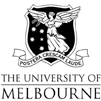| Future Directions and Future Effects |
|
In this session we will look at some of the initiatives that are and should be shaping the Web. We will also draw some conclusions from today's workshop about what it takes to be a 'web indexer'.
|
Information Infrastructure | XML | So you want to be a Web indexer?
|
| Information Infrastructure |
- Many initiatives - some have already been and gone, some survive and grow.
- No 'one size fits all', no 'turn-key' solutions - nature of the resource determines the tools and approaches that are required.
- Importance of an information model that is scalable and maintainable.
- Indexing - gateway to the external web, as well as internal concepts. [ See Bright Sparcs Index to Technology in Australia ]
- Encourage infrastructure that encourages two-way mapping
|
| Return to top |
| XML - The Next Generation Web is coming! |
|
|
| Return to top |
| So you want to be a Web indexer? |
- Know the Web - be aware of the forces shaping it, know what makes an indexable resource.
- Be a user - look for good and bad examples of indexing, keep track of the latest technological developments.
- Know how to create HTML - if you like it look at the source to see how it is done, be able to mock up HTML pages.
- Know about Web site design - what's good/what's bad, what works/what doesn't, a good index is useless unless it is compatible with the browser accessing it!
- Know about search engines - and how you can add value to them!
- Start looking at XML - what does it mean for indexing!
|
| Return to top |

